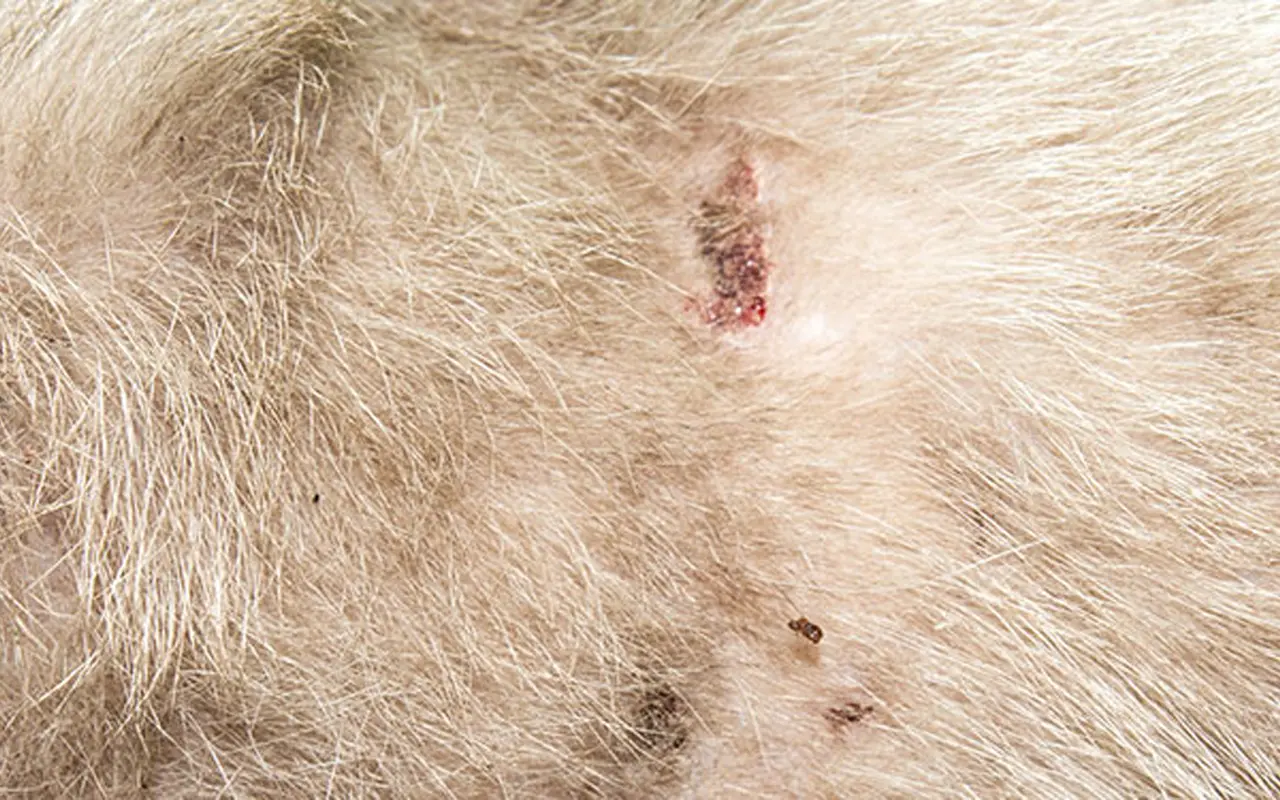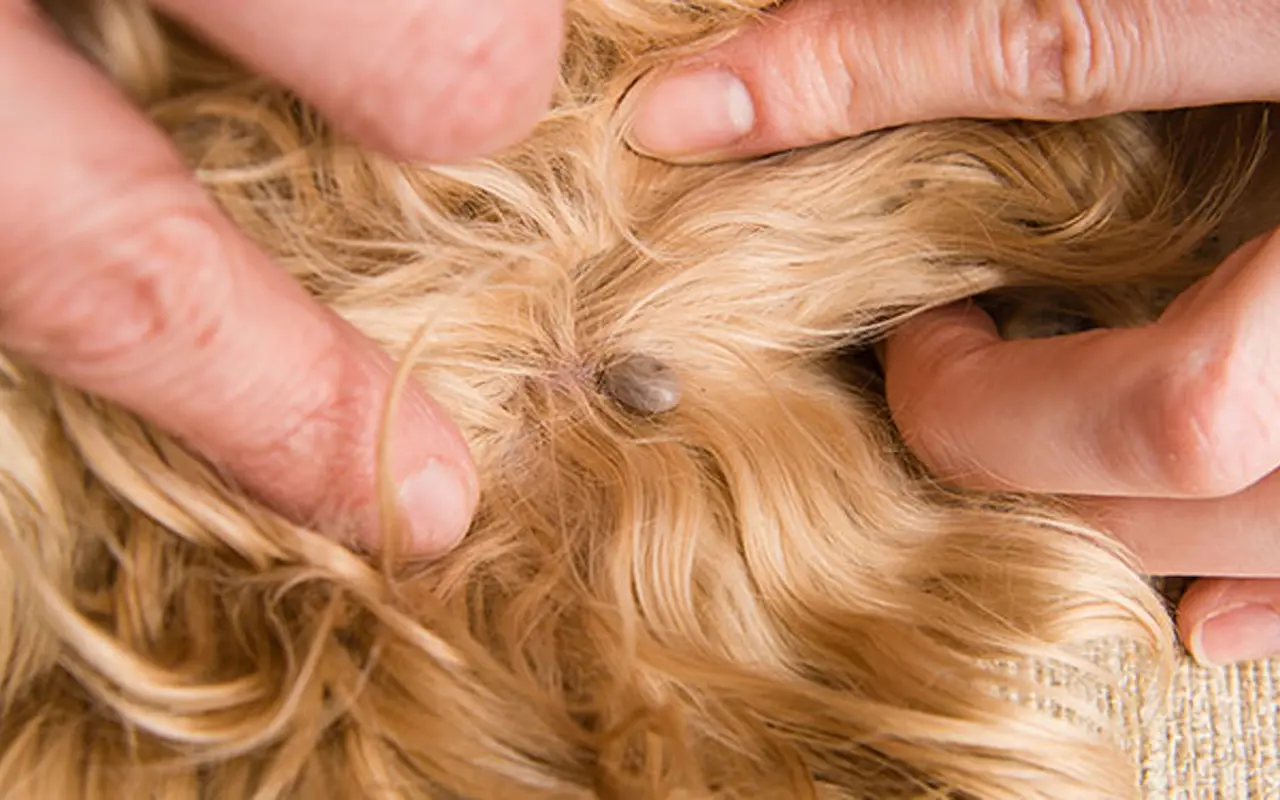Managing Fleas and Ticks for Dogs and Cats
Four-legged friends are a happy addition to the family. Find out how to help protect your dogs and cats from blood-sucking pests that can spread disease.
Powered by the SC Johnson Center for Insect Science®
Dogs, cats, and other pets are beloved members of the family. But they can also introduce unwanted insects into the home. More importantly, some of these insects can spread diseases to your pets. For example, ticks can transmit Lyme Disease and Rocky Mountain spotted fever to dogs and cats.
We’ve got expert tips to help you protect your home and furry family members from fleas and ticks—and the diseases they can spread.
Fleas and your furry friend
Fleas are the most common external parasite on dogs and cats.1 These biting pests can make your pets miserable and lead to a flea infestation in your home. That’s why it’s important to learn how to recognize the signs of fleas and take quick action to eradicate them.
Signs of fleas on dogs & cats2

While you may see fleas scurrying quickly through your pet’s fur, the most common signs of fleas on cats and dogs include:
- Excessive scratching, licking, or biting.
- Rashes or lesions on your pet’s body.
- Fur loss due to a reaction to flea bites or excessive scratching and licking.
- Pale gums, which can indicate anemia in your pet due to blood loss.
- Flea feces, which look like small black or reddish-brown specks, on your pet or around your home.
Flea prevention & elimination tips
- Ask your vet about treatments that help prevent and kill fleas on dogs and cats.
- Inspect your pets for signs of fleas regularly, especially during warm months when these pesky parasites are at their peak.1
- Wash your pet regularly with a flea shampoo.
- Use a flea comb to help reduce the number of adult fleas.
- If signs of fleas persist, do a follow-up treatment two weeks after the first one because fleas in cocoons may survive the first round.
- Take quick action to help prevent and kill fleas in the home with expert tips from our entomology team.
Did you know?
An adult flea can consume up to 15 times its body weight in blood each day.3 And if your dog or cat is infested with fleas, it can introduce hundreds of new flea eggs into the home every day.
Help protect your pets from ticks
Ticks can spread Lyme Disease , Rocky Mountain spotted fever, tick paralysis, and other diseases to dogs and cats. They can also cause anemia, and skin irritation and infection. To help protect your four-legged friends, be sure to ask your veterinarian about tick-prevention products for dogs and cats. And read below for expert tips to help you find and remove ticks from your pets.
How to check your pet for ticks

To check dogs or cats for ticks, just run your fingers through his or her fur using gentle pressure to feel for any small bumps. Pay special attention to these common tick hiding spots on pets:
- Under the collar
- In and around the ears
- Around the eyelids
- Under the front legs
- Between the back legs
- Around the tail
- Between the toes
Act fast to remove ticks
It only takes a tick from 3 to 24 hours of feeding to infect an animal with Lyme disease.4 That’s why it’s so important to check your pets for ticks every day, especially after they spend time outdoors, so you can find and remove these blood suckers as soon as possible
How to remove ticks from dogs & cats4
- Part your pet’s fur to expose his or her skin and the tick.
- Grasp the tick as close to your pet’s skin as possible using a fine-tipped tweezers
- Pull the tick upward slowly and firmly. Don’t twist or jerk the tick because this can cause part of its mouth to break off in your pet’s skin.
- Put the tick in a sealable jar or plastic bag with a teaspoon of rubbing alcohol to kill the tick. Save the container for a few weeks so you can take the tick to your veterinarian to examine in case your pet becomes ill.
- Disinfect the bite area and skin around it with an antiseptic.
- Check the bite area frequently for a few weeks. Make an appointment with your veterinarian if the bite looks irritated/infected or if your pet has trouble walking, seems especially tired, or isn’t eating or drinking like normal.
- Never crush a tick with your fingers after removal to avoid infecting yourself with tick-borne diseases.5 Instead, dispose of a live tick by putting it in alcohol, flushing it down the toilet, placing it in a sealed bag/container, or wrapping it tightly in tape before putting it in the trash.
Did you know?
You should never use nail polish, petroleum jelly, alcohol, gasoline, or a hot match to remove ticks from pets because these methods can force infected fluids back into the bite.6
We study insects to help you protect your pets
At the SC Johnson Center for Insect Science™, our scientists are dedicated to helping families worldwide learn how to use pest control products and help protect themselves and their pets against insects that can transmit diseases.
Find solutions for pests that affect pets
Protect your pets from blood-sucking insects that spread disease with products designed to help you get rid of fleas, and ticks.
Disclaimer
This is provided for your information only and is not intended to diagnose or treat any medical condition in pets. Should you have concerns or notice symptoms in your pet, please contact your veterinarian.
Sources
- http://www.petsandparasites.org/dog-owners/fleas/
- https://www.petmd.com/dog/what-do-fleas-look-dogs
- https://entomology.ca.uky.edu/ef602
- https://www.webmd.com/pets/dogs/find-remove-ticks#1
- https://www.fda.gov/consumers/consumer-updates/ticks-and-lyme-disease-symptoms-treatment-and-prevention
- https://pets.webmd.com/ss/slideshow-flea-and-tick-overview
Related Articles

How to Help Get Rid of Fleas
There are approximately 2,500 different flea species1 sucking blood around the world. Find out where fleas come from, how to distinguish between bed bug and flea bites, and how to help kill fleas in the house.

Applying Pest Control With Kids and Pets
Find easy tips to help banish pesky bugs from your home and apply pest control around children and pets.

Removing and Preventing Bugs After Moving to a New Home
Moving into a new home can be an exciting but stressful experience and the last thing you need is bugs making themselves feel at home.

